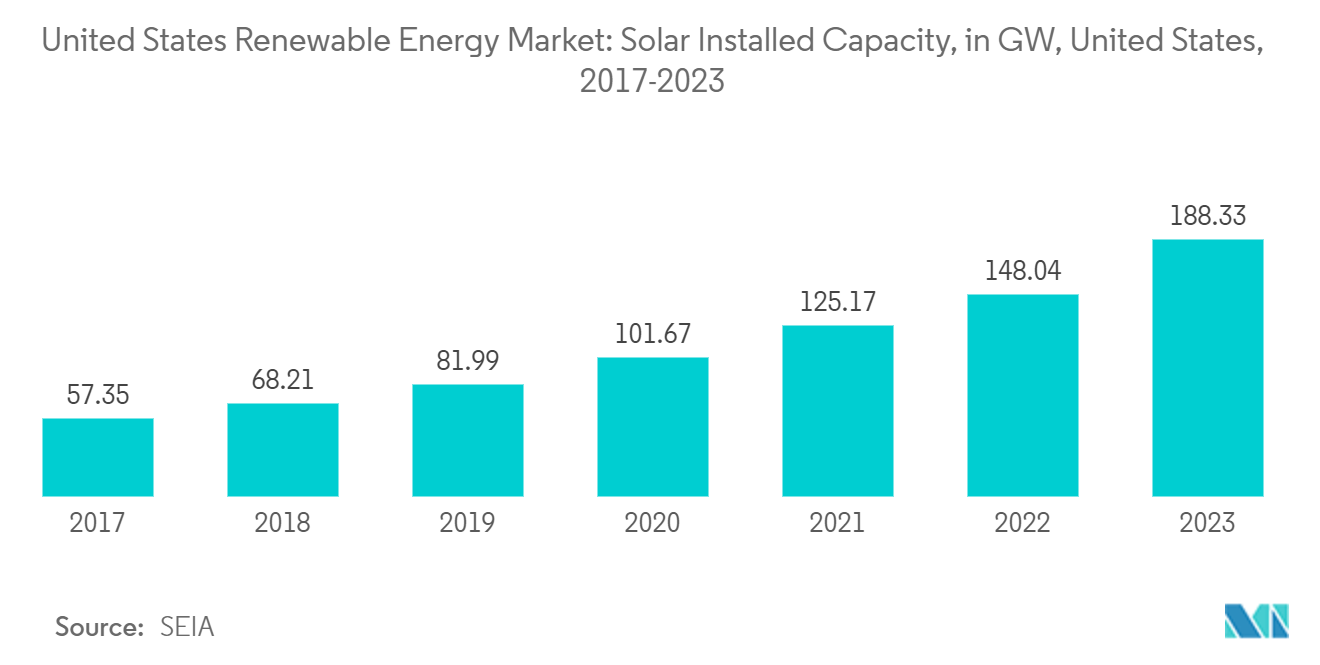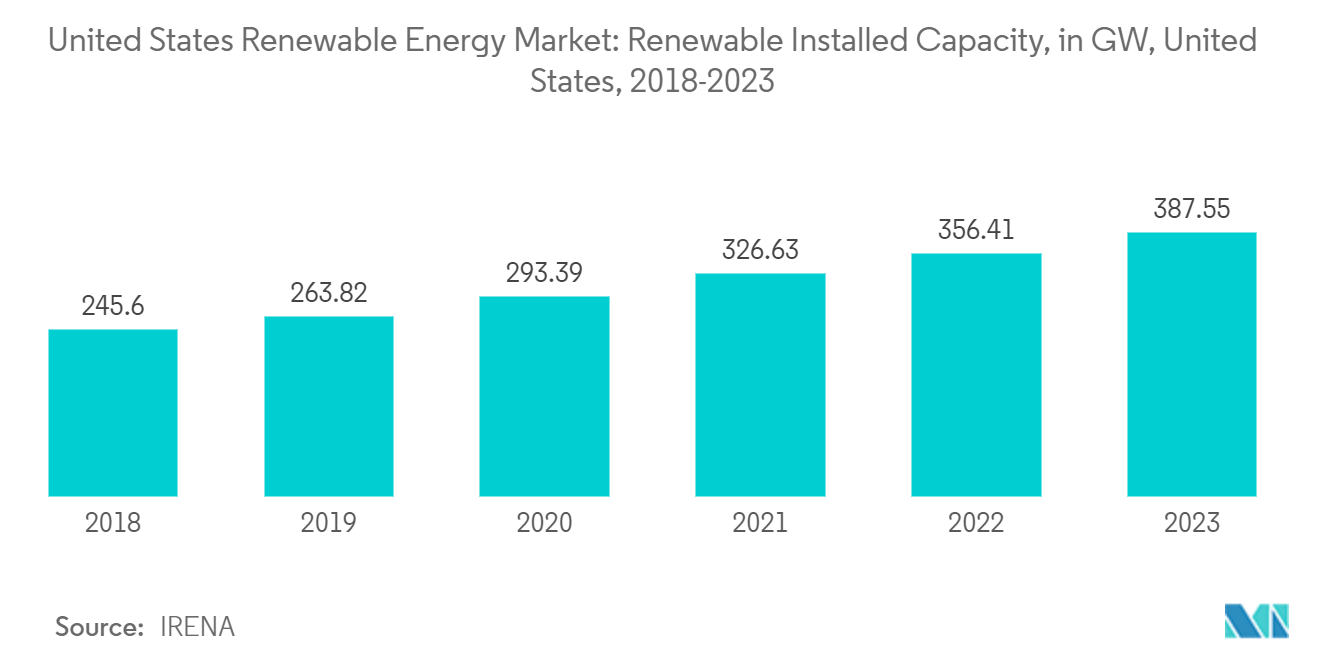Market Trends of United States Renewable Energy Industry
Solar Energy to Witness Significant Growth
- The solar power industry in the United States has become increasingly accessible and widespread, reaching new heights in 2023. According to the Solar Energy Industries Association (SEIA), the US solar industry added an impressive 32.4 GW of new electric generating capacity in 2023, marking a significant milestone.
- This growth was observed across all solar market segments, leading to a total installed capacity of around 188 GW nationwide. The utility-scale industry played a crucial role, contributing 22.5 GW of new capacity, while nearly 800,000 US citizens installed solar systems in their homes.
- The United States aims to install an average of 30 GW of solar capacity annually until 2025, with plans to ramp up to 60 GW per year from 2025 to 2030. This ambitious goal is expected to drive rapid development in the solar photovoltaic (PV) market, with cumulative solar installed capacity expected to reach 673 GW by 2034, enough to power over 100 million homes.
- A notable project underscoring this growth is the Edwards & Sanborn Solar + Energy Storage project, launched by Terra-Gen and Mortenson in January 2024. This massive renewable energy endeavor spans 4,600 acres and includes 1.9 million First Solar panels, with a solar capacity of 875 megawatts direct current (MWdc) and nearly 3.3 gigawatt-hours (GWh) of energy storage. It also features a 1.3 GW interconnection capacity, making it the largest in the United States.
- The solar energy industry's rapid growth can be attributed to favorable government policies, such as the Solar Investment Tax Credit, declining costs, and increasing demand for clean electricity across private and public sectors.
- For instance, in June 2023, the US Environmental Protection Agency (EPA) launched a USD 7 billion grant competition under President Biden's Investing in America initiative. This program aims to enhance access to affordable, clean solar energy for millions of low-income households. The Solar for All competition, funded by the Greenhouse Gas Reduction Fund established by the Inflation Reduction Act, will award up to 60 grants to various entities, including states, municipalities, tribal governments, and nonprofit organizations, to develop and expand programs that support residential solar in underserved and low-income communities.
- Further illustrating this momentum, in April 2023, the Virginia State Corporation Commission (SCC) approved almost two dozen additional solar and energy storage projects to help meet the expanding needs of Dominion Energy Virginia customers. When completed, the projects will generate more than 800 megawatts (MW) of carbon-free electricity, which will be enough to power about 200,000 Virginian homes at full capacity. Consumers are expected to save more than USD 250 million in gasoline over the first ten years of operation because renewable energy does not require fuel.
- Therefore, increasing investments in the sector are expected to drive the US renewable energy market during the forecast period.

Supportive Government Policies to Drive Market Demand
- Government policies, such as tax credits, grants, and subsidies, can significantly reduce the upfront costs of renewable energy installations. These incentives make renewable energy projects more financially viable and attractive to investors, driving market growth.
- For instance, in March 2023, the US Department of Agriculture (USDA) revealed that starting from April 1, applications would be accepted for grants worth USD 1 billion. These grants specifically aim to assist agricultural producers and rural small businesses in investing in renewable energy systems and implement energy-efficiency improvements.
- In 2021, the United States committed to achieving a 50% to 52% reduction in greenhouse gas pollution compared to 2005 levels by 2030. The United States has also pledged to transition to a carbon-neutral economy by 2050.
- With these supportive policies, the installed capacities of renewable energy have grown significantly in recent years in the country. According to the US Energy Information Administration, the electricity generated through renewable energy was around 23% of the total electricity generated. This capacity is expected to increase further due to the government's various auctions for renewable energy.
- For instance, in June 2023, under the Department of the Interior, the Bureau of Land Management conducted an auction for utility-scale solar energy development in Nevada, raising USD 105.15 million in top bids. The auction involved four parcels spanning 23,675 acres in the Amargosa Desert, potentially adding nearly 3 GW of renewable energy to the electrical grid.
- Further, in April 2024, the US Department of the Interior revealed two proposed auctions for offshore wind energy development, one off the coast of Oregon and the other in the Gulf of Maine.
- Therefore, supportive government policies are expected to drive the renewable energy market in the United States during the forecast period.


